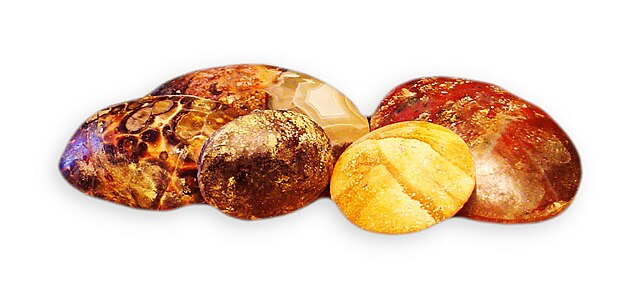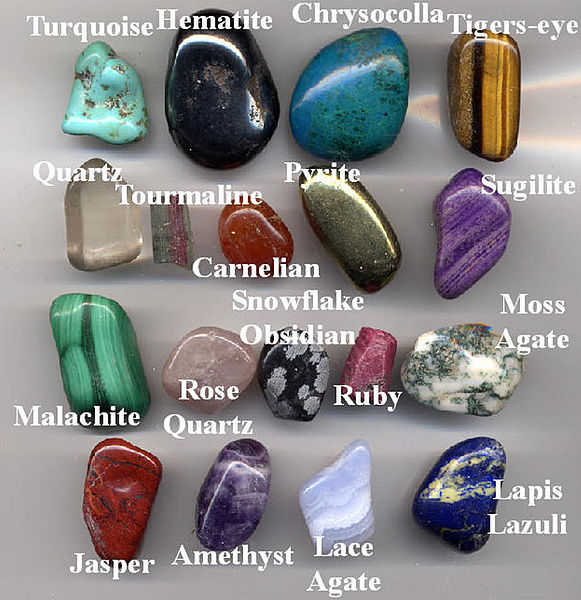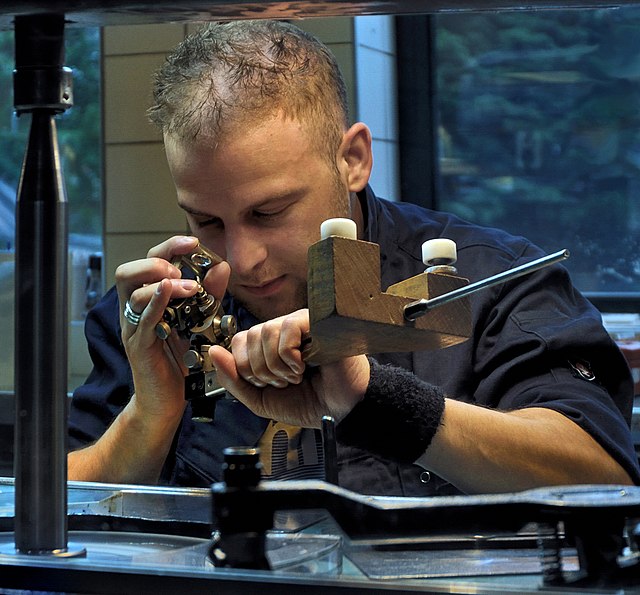Lapidary is the practice of shaping stone, minerals, or gemstones into decorative items such as cabochons, engraved gems, and faceted designs. A person who practices lapidary is known as a lapidarist. A lapidarist uses the lapidary techniques of cutting, grinding, and polishing. Hardstone carving requires specialized carving techniques.
Examples of lapidary products
Gemcutting in Thailand
A 17th century English lapidary text
Lapidary tool kit from around 900 AD, Chaco Culture National Historical Park
A gemstone is a piece of mineral crystal which, when cut or polished, is used to make jewelry or other adornments. Certain rocks and occasionally organic materials that are not minerals may also be used for jewelry and are therefore often considered to be gemstones as well. Most gemstones are hard, but some softer minerals such as brazilianite may be used in jewelry because of their color or luster or other physical properties that have aesthetic value. However, generally speaking, soft minerals are not typically used as gemstones by virtue of their brittleness and lack of durability.
A collection of gemstone pebbles made by tumbling the rough stones, except the ruby and tourmaline, with abrasive grit inside a rotating barrel. The largest pebble here is 40 mm (1.6 in) long.
Spanish emerald and gold pendant at Victoria and Albert Museum
Enamelled gold, amethyst, and pearl pendant, about 1880, Pasquale Novissimo (1844–1914), V&A Museum number M.36-1928
A diamond cutter in Amsterdam








